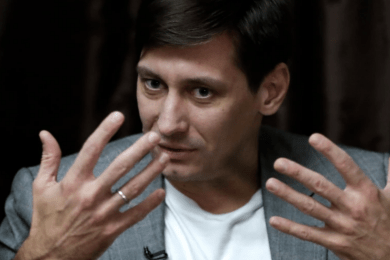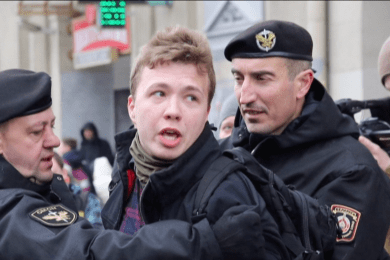This piece was originally written by Ian Reinke for the Dartmouth Political Times, a link to the original article can be found here
Ok wait a second, Trans-what-ia?
Transnistria. Chances are that unless you consider yourself an avid reader of current Eastern European affairs, or a nerd enthralled by Communist-era politics, you’ve never even heard of this narrow territory lying along the border between the post-Soviet nations of Moldova and Ukraine. While unanimously recognized internationally as officially part of Moldova, this separatist territory that houses a little over half a million people has been de-facto independent for nearly three decades. This pseudo-nation stuck in its Soviet past possesses its own declared capital city, currency, constitution, parliament, flag and anthem. Spotting a hammer and sickle adorned flag while walking down one of the streets in its Russian-speaking capital, Tiraspol, might cause one to understandably wonder whether they had just been thrown back in time to a moment when the Cold War-stricken world order was still governed by the actions of two international superpowers. As weird as it may seem, examining the origins of how this pseudo-state came to be and its enduring relationship with Russia might serve to be the perfect way to more fully understand some of Russia’s major regional foreign policy decisions over the last couple decades.
But before we get to discussing the greater picture of how Transnistria fits into this political trend, we should probably first ask the question: just how exactly did a state so curiously frozen in its Soviet past come to be? And more importantly, just why exactly can this small and seemingly insignificant border region teach us about the bigger picture of Russian foreign policy?
The country that isn’t a country: a brief history
In the wake of the chaos that defined the frenzied dissolution of the USSR in the late 1980s and early 1990s, the subsequent fate of the snaking border region that laid along the Dniester river between the now-hurtling-towards-independence states of Ukraine and Moldova quickly became a question of alarm for the local population. Officials in the Moldavian capital Chisinau often spoke publicly of possible “reunification” with linguistically and culturally kinned neighboring Romania, itself just recently breaking away from the iron-fisted legacy of communism. In 1989, the passing of a law making the Moldovan variant of Romanian the official language of the state pushed the tension between the governing elites and the majority Russian-speaking region overboard. The following September, the region would declare its intent to secede and remain part of the still-existing USSR, igniting a war that would see two years of bloody conflict, Russian intervention on the side of the separatists, and the ultimate crafting of a ceasefire granting the territory de-facto independence. To enforce the settlement, a 10km demilitarized security zone patrolled by Russian army forces was created and still exists to this day. Russia refuses to pull out from the area, claiming that its 1,500 strong forces are still necessary to carry out enduring “peacekeeping operations” and to “stop a fratricidal war” from happening.
So what’s happening now?
A thorn in the side of Moldovan politics, the continued presence of Russian troops in the region has been a consistent and insurmountable roadblock in the nation’s quest for Europeanization. Moreover, many in the West remain unsettled about the large arsenal of Soviet-era weapons that lay locked-up in the territory, and given its history over the last thirty years as an oftentimes lawless paradise for illegal-arms traders, the status of Transnistria is not only of concern to Moldova, but to the greater region at large. Moscow’s latest rebuke of repeated calls from Chisinau to “magically” remove the over one thousand Russian troops from the area have demonstrated that, to the clear benefit of the Russian Federation, this conflict will most likely continue to linger in a state of gridlock for the foreseeable future.
What can this teach us about Russia’s foreign policy?
The idea of Russia: 1. butting into another former-Soviet nation’s affairs justified by a claimed need to protect the rights of a pro-Russian separatist population; 2. promptly providing generous financial and military support for the respective group; 3. making sure that de-facto autonomy for the seceding population is ensured, should seem a bit familiar to anyone following regional news over the last couple decades. It should sound familiar because this is exactly what happened in 2008 when Russia supported the breakaway of the Republic of South Ossetia and the Republic of Abkhazia from Georgia. And exactly what happened when in 2014, Russia began supporting the armed rebellion brought about by the Donetsk People’s Republic and Luhansk People’s Republic in Eastern Ukraine. And, most famously, it is exactly what happened when Russia dramatically annexed the Crimean Peninsula in March of that same year. Simply by connecting these dots above, it does not necessarily take a degree in post-Soviet politics to see that these repeated interventions are not isolated incidents. Clearly, the examples of Donetsk, Abkhazia and, of course, Transnistria each form a part of a larger trend in the Russian Federation’s regional foreign policy strategy, in which through exploiting these “frozen conflicts,” it has been able to maintain a significant amount of influence in the greater post-Soviet area. Through this strategy of instigating everlasting conflicts among neighboring states, Russia is able to do a couple of significant and beneficial things for its local foreign affairs. Firstly, by effectively inserting itself as a major mediating player in the “frozen conflict,” Russia ensures that it maintains a sizable role in the internal affairs of the state hosting the insurrection movement. Secondly and most importantly, it gets to prevent its historical sphere of influence from gradually diminishing to the benefit of Europe.
By looking deeper at the case of Transnistria, we can begin to understand a bit further how these two strategies have been and are currently being put into practice, and why this trend could have large ramifications for regional foreign affairs into the foreseeable future.
Not only Frozen-in-Time but Frozen-in-Conflict as well
With a simple Google search for an image of its parliament building — which is depicted as sporting a multi-meter high grand statue of Lenin in its front entrance plaza — one can tell that Transnistria is a pseudo-state stuck in its decades-gone Soviet past. However, this rampant communist-era nostalgia is not the only thing keeping this territory in limbo; it is, in fact, the more influential political stalemate existing since 1992 that puts this strip of territory lining the Dnieper River in the middle of a foreign affairs balancing act. Over nearly the last three decades, thousands of Russian troops have cycled in and out of Transnistria’s claimed borders in order to ensure the area’s autonomy and security. While Moldova considers the Transnistrian region to be an integral part of its national territory, it knows that while there continues to still be a notably superior Russian military presence in the region, all avenues of attempting to pursue talks of conflict resolution and even possible reunification have to be approached by going through Moscow first. By placing itself in this nonnegotiable position of influence in an issue so central to the concept of national sovereignty as territorial integrity, Russia gains the crucial opportunity to exert an substantial amount of power in swaying local politics in a direction favorable to its interests. It also gains the perk that in the process of its occupation, it prevents the development of a strong and stable political system for Transnistria, as much time and energy ends up being consequently wasted in polarized debates on how to deal with the separatists. The triumph of a pro-Russian candidate in the country’s presidential elections of 2016 can serve to demonstrate how this polarization has been beneficial to Moscow’s presumed underlying goals. Preventing the host-nation of the “frozen conflict” — in this case Moldova — from developing a strong and stable governmental system ultimately serves one of Russia’s most important local foreign policy priorities, maintaining a buffer zone between itself and Europe through conserving its sphere of influence.
Freezing the Region’s Political Legacy
In both the well-documented cases of Ukraine’s and Moldova’s separatist disaster dramas, one can observe that the arrival of Russian-led armed intervention arrived simultaneously while each country was embroiled in an increasingly violent internal debate on whether to pursue closer ties with Europe or remain closer to their former-Soviet overlord’s sphere of influence. In the case of Ukraine’s 2014 EuroMaiden revolution, Russia’s interference in Crimea and Donbass coincided with national turmoil that had ensued as a result of a choice that Ukraine’s now-exiled president made after refusing a deal that would have brought his country economically and politically closer to the European Union. In the case of Moldova and Transnistria, the example of attempting to drift away from Russia’s area of influence was a little more extreme. Instead of merely desiring to sign an association agreement with Europe, shortly following independence from the USSR, some Moldovan officials in Chisinau instead passionately and publicly spoke of full national reunification with their linguistically-kin nextdoor neighbor Romania. The ensuing war and enduring separatist conflict that has lasted until now substantially altered this transnational rhetoric, and now with the perpetual presence of Russian troops on claimed Moldovan soil, the idea of reunification seems unlikely in the foreseeable future to say the least. Aside from just preventing this initially proposed national reunion from taking place, Russia’s continued sustaining of this conflict also directly prevents Moldova from getting more integrated into European institutions. Political resources that could have been used to help sort out corruption and construct a stable national economy instead become wasted on dealing with the separatist question, effectively preventing the nation from meeting benchmarks to successfully pursue a path to E.U. membership. In addition, due to the fact that NATO will never admit new members who have enduring territorial disputes out of fear that acceptance of the state will bring the alliance into an armed conflict, Moldova remains in an everlasting state of limbo in its pursuit for security integration. These conceptual entanglements due to Russian intervention are what is also preventing other host-countries of “frozen-conflicts” like Ukraine and Georgia from pursuing closer ties with Europe.
Frozen but Nevertheless Vividly Relevant
While Transnistria might appear from first glance to be merely a curious snaking territory stuck in a bygone communist era, this seemingly insignificant region can serve to teach us larger lessons about international relations and Russia’s foreign policy in the area. As war rages on in Eastern Ukraine with no immediate end in sight, and countries in the post-Soviet sphere remain forcibly carved apart, one can see that there might be in fact a lot to learn from this Lenin-infatuated pseudo-state claiming to be the last country on earth officially sporting a hammer and sickle on its national flag.










